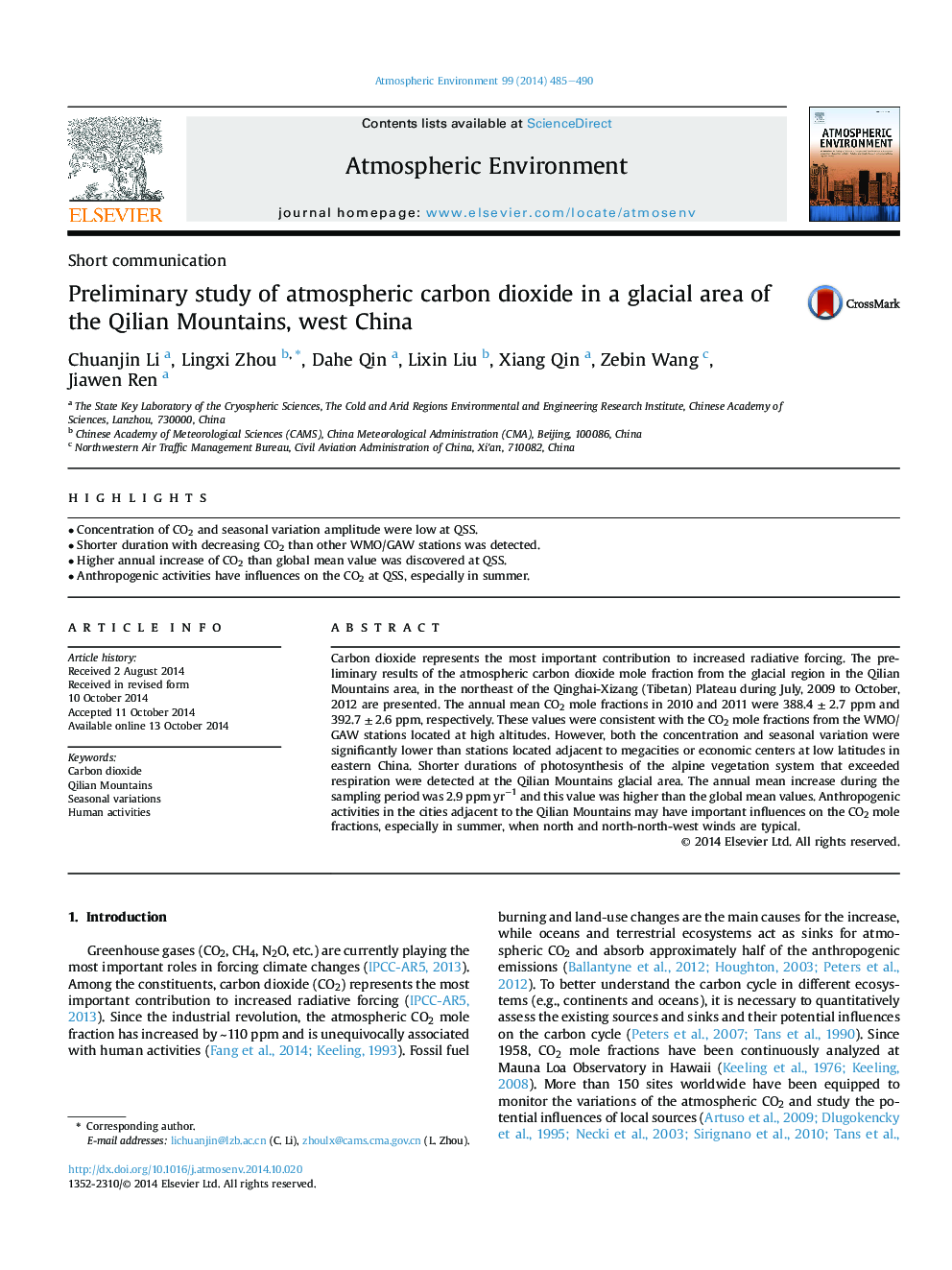| Article ID | Journal | Published Year | Pages | File Type |
|---|---|---|---|---|
| 6339288 | Atmospheric Environment | 2014 | 6 Pages |
Abstract
Carbon dioxide represents the most important contribution to increased radiative forcing. The preliminary results of the atmospheric carbon dioxide mole fraction from the glacial region in the Qilian Mountains area, in the northeast of the Qinghai-Xizang (Tibetan) Plateau during July, 2009 to October, 2012 are presented. The annual mean CO2 mole fractions in 2010 and 2011 were 388.4 ± 2.7 ppm and 392.7 ± 2.6 ppm, respectively. These values were consistent with the CO2 mole fractions from the WMO/GAW stations located at high altitudes. However, both the concentration and seasonal variation were significantly lower than stations located adjacent to megacities or economic centers at low latitudes in eastern China. Shorter durations of photosynthesis of the alpine vegetation system that exceeded respiration were detected at the Qilian Mountains glacial area. The annual mean increase during the sampling period was 2.9 ppm yrâ1 and this value was higher than the global mean values. Anthropogenic activities in the cities adjacent to the Qilian Mountains may have important influences on the CO2 mole fractions, especially in summer, when north and north-north-west winds are typical.
Related Topics
Physical Sciences and Engineering
Earth and Planetary Sciences
Atmospheric Science
Authors
Chuanjin Li, Lingxi Zhou, Dahe Qin, Lixin Liu, Xiang Qin, Zebin Wang, Jiawen Ren,
